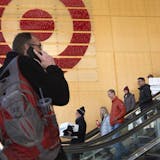kids share everything – time together, towels, hats, even lice. Anyone can get lice. But it's totally treatable and there are no long-term effects.
We spoke with Dr. Molly Martyn, a pediatrician at Children's Hospitals and Clinics of Minnesota, about how to prevent, identify and treat it.
1. What are some of the signs of lice?
Lice are most often seen rather than felt. Most children do not have symptoms when they have lice. In some cases, they can develop itching from an allergic reaction to the lice saliva.
The head louse is about 3 mm long (about the size of a sesame seed) and is a grayish-white color. Lice move by crawling, not by flying. Females lay eggs (commonly called "nits") at the base of hair shafts. The eggs hatch after a week and leave the remains of their white case in the hair. The eggs are firmly attached to the hair, so they move away from the scalp as hair grows.
The best way to look for live lice is to comb the hair with a fine-toothed nit comb. Hair should be wet with a conditioner. With a fine- toothed comb, start touching the scalp and comb through to the end of the hair, looking for lice or nits after each stroke.
Nits (eggs or the empty egg cases) can stay in the hair for some time even after active infestation is cleared.
2. How do lice spread?



